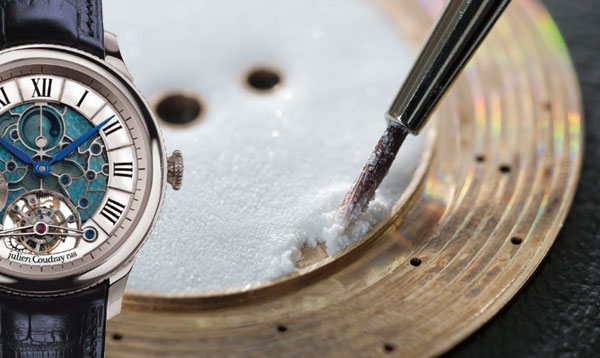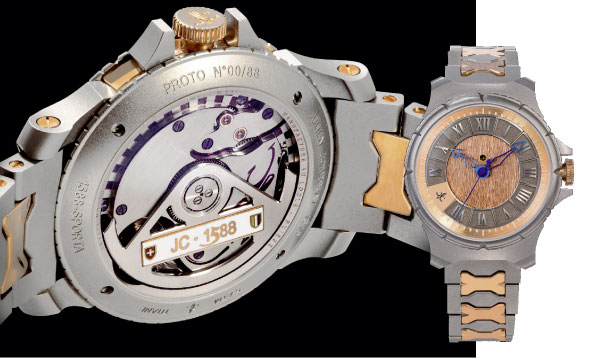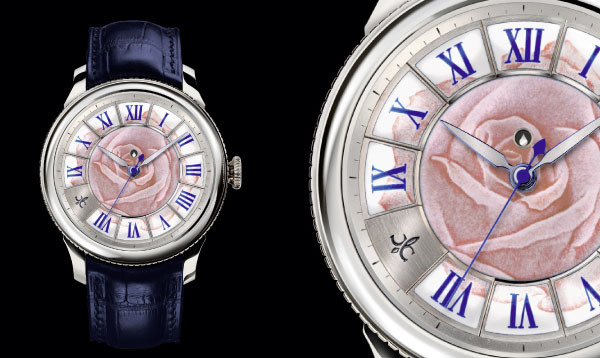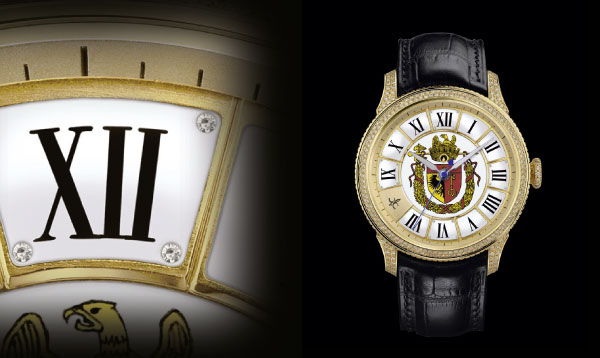
Over the past 25 years, Fabien Lamarche has shown a determination to learn all the professions currently exercised on behalf of third parties, and of course of his own brand, Julien Coudray 1518. He makes a point of perpetuating this expertise by placing teams of two people in each job. Everything is developed
and produced in-house, from the technical department through to finishing and from screws to the exclusive Julien Coudray wheels with special-shaped spokes. The set of tungsten carbide tools required for each model is developed on-site, including for example hundreds of milling cutters for each component. The Julien Coudray unit encapsulates the quintessence of this perfectionist quest. Enamelling a 1 mm thick part is no pipedream here. Devoting three days to the bridge of a tourbillon carriage, or ten operations to a single dial hour-markers, are all part of a day’s job. Cutting millimetre-thick parts on historical machines improved by in-house developed and more modern technologies is all part of a contagious enthusiasm shared by each department.
Sculpting an oscillating weight shaped like the crossed daggers of Francis the 1st on a fleur de lys is a natural expression of the magical atmosphere pervading these premises. Fabien Lamarche is everywhere at once, serving as both the driving force and a link in the chain – such as by applying the laser weldings
in gold wire in the same colour as the dial, or designing patented hands sweeping across the grand feu enamel dial, or an also patented folding clasp. Not content with having already developed 10 calibres for Julien Coudray (of which four currently equip the brand’s first models), he has defined 26 in all and is
preparing to present the first presentation box for hand-wound watches, featuring automatic touch-screen adjustment to all 24 time zones and ultra-precise atomic clock-benchmarked setting. In a nutshell, this creative talent has invented a whole new approach to made-to-measure horology.





